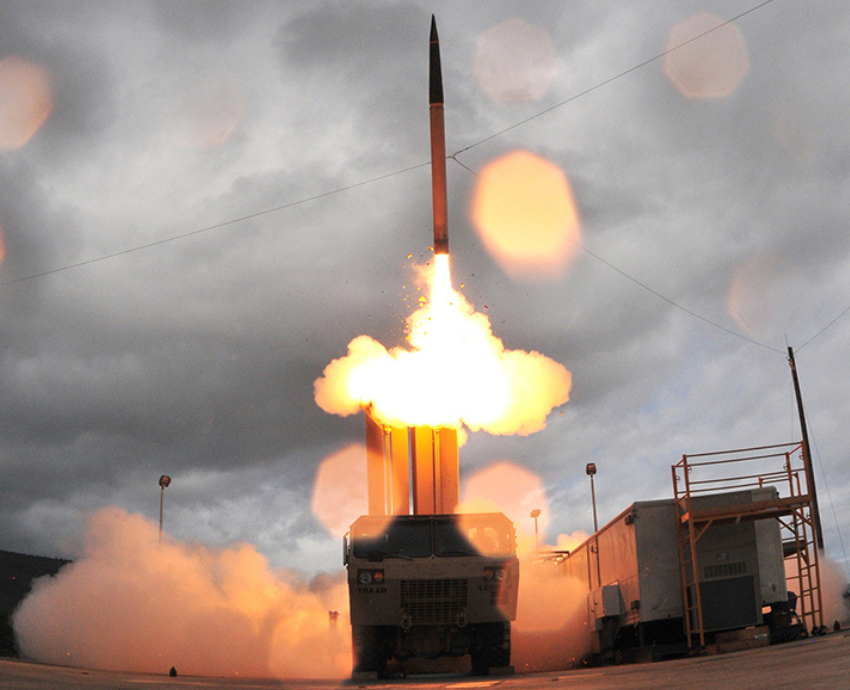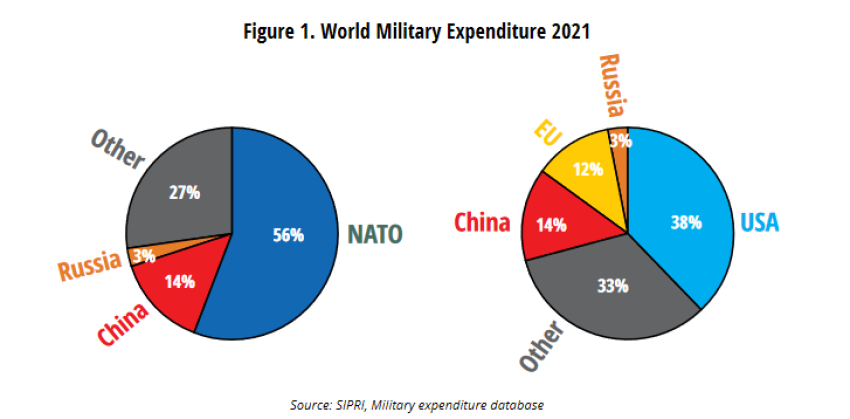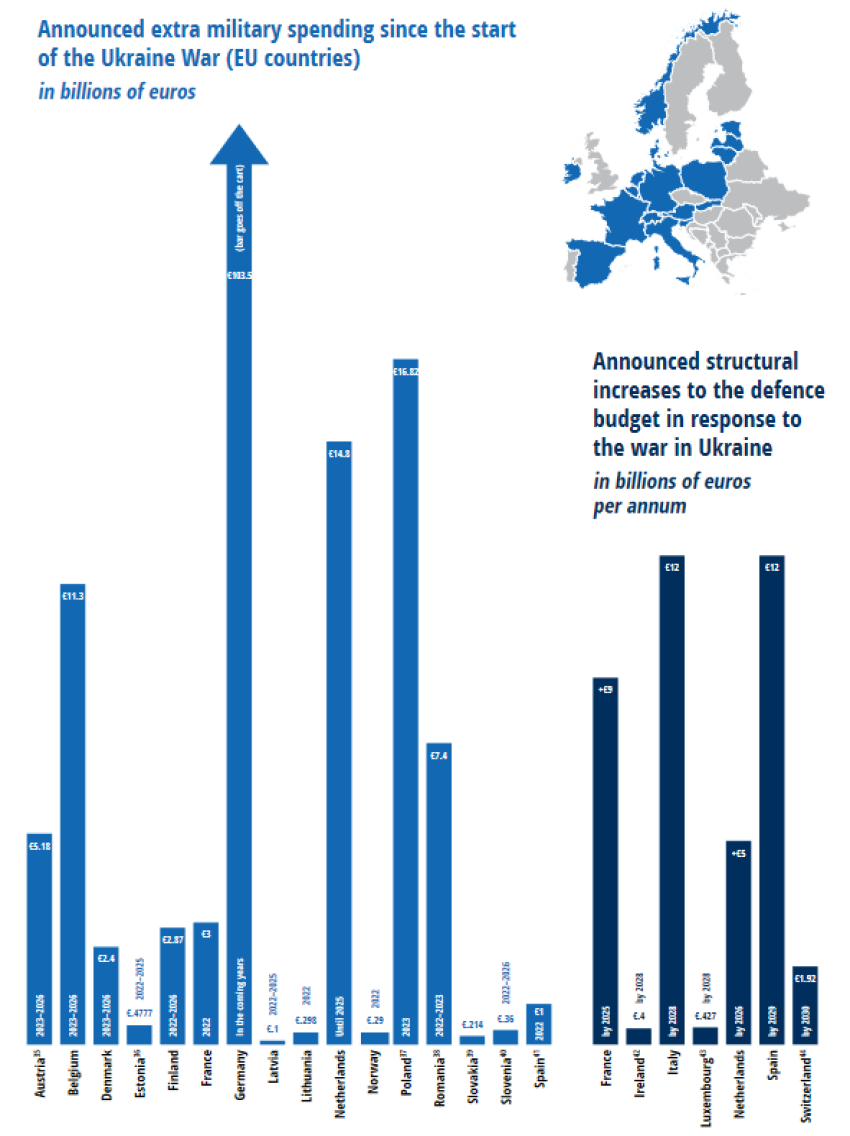
Stop Wapenhandel (Stop the Arms Trade) and The Transnational Institute (TNI) co-produced an important dossier in November that details the enormous funds the West is spending on a new arms race.
Smokescreen: How states are using the war in Ukraine to drive a new arms race is a detailed summary of NATO’s military spending. It reports on how the European Union (EU) is becoming more like a military alliance and looks at the amounts involved. The 54-page dossier, with 285 citations, provides activists with important data for the campaign against militarism and war.
The authors conclude that the drive for militarism always comes at the expense of meeting other pressing health, social and housing needs. As such, the arms race is “entirely inappropriate” and it “will deepen rather than resolve the political and social problems that risk culminating in conflict”.
In addition, the West has “overwhelmingly prioritized militarism” and continues to do so “despite mounting evidence that this strategy does nothing to curb geopolitical tension”, the report said .
TNI is an international non-profit research and advocacy think tank, founded in 1974 in the Netherlands. Its founder, Orlando Letelier, was assassinated by the Chilean secret service in 1976. Stop Wapenhandel is an independent research organisation campaigning against the arms trade and arms industry.
As the authors document, the trend towards militarism began before Russia invaded Ukraine. Global military spending was already at an all-time high.
The Stockholm International Peace Research Institute (SIPRI) said military spending has been on the rise since the late 1990s. It had surpassed US$2.1 trillion by 2021, up by 0.7% on the previous year. Western Europe increased its spending by 3.4% between 2020‒21.
SIPRI said the growth in military spending in Central and Western Europe was mostly driven by greater expenditure on arms procurement and military research and development.
“This means that the recent upsurge in military expenditure in Western Europe was not in response to an illegal act of aggression or the outbreak of war but rather as part of a global trend to beef up Europe’s military capacity, and perhaps to a greater extent, its arms industry, fuelling war and conflict far beyond Europe’s shores,” Smokescreen’s authors state.
374 - smokescreen_world_military_expenditure1.png

“Even before Russia’s invasion of Ukraine in 2022, the combined military expenditure of NATO members was more than 17 times that of Russia and roughly four times that of China — a fact that did not deter Russia from invading Ukraine,” the authors said.
The war on Ukraine shows clearly that armed deterrence has been proven not to work, Smokescreen said. EU states announced in 2021 that they would spend close to €200 billion ($283 billion) on the military in the coming years. But after Russia’s invasion of Ukraine, 18 out of 27 countries in the EU announced they were increasing that even more.
The policy of “armed deterrence” is a fig leaf for helping arms corporations rake in bigger and bigger profits.
Smokescreen found:
• The US is responsible for 38% of military spending globally.
• 27 EU countries combined spend almost four times as much on the military as Russia and Britain alone spends slightly more than Russia.
• In 2014, 3 out of 30 NATO member states spent more than 2% of their GDP on the military (the NATO target). This was expected to rise to 9 by the end of last year, with another 9 countries expected to hit the target by 2025.
• The European Commission is pushing for an extra €500 million (2022–24) to be added to the European Defence Fund (EDF) budget of €8 billion “to incentivise joint arms procurement”.
Russia’s war on Ukraine has “helped the arms industry boost its image and position itself as necessary to keep the public safe”, the researchers state.
They noted that the largest beneficiaries of armed deterrence are arms corporations, which are profiting from the sale of arms to Ukraine, as well as NATO countries replenishing their arsenals.
In addition, the energy crisis, related in part to the war, has put the option of nuclear energy back on the agenda, and arms corporations that produce or maintain nuclear weapons are using the war to push to reduce restrictions on investment.
Nuclear arms
The Treaty on the Prohibition of Nuclear Weapons entered into force in January 2021 but, significantly, it has not been ratified by any nuclear state.
Large European arms companies, such as Airbus, Leonardo and Thales, stand to gain by removing investment restrictions on nuclear weapons.
The threat of nuclear warfare has risen over the past 10 years, as arms-control agreements such as the Anti-Ballistic Missile Treaty (ABM) and the Intermediate Range Nuclear Forces Treaty (INF) broke down between the US and Russia. Also contributing is the modernisation of nuclear arsenals, often with the introduction of smaller, so-called tactical nuclear weapons.
“The terrifying possibility of a limited nuclear strike leads to a dangerous lowering of the threshold to use nuclear weapons on the battlefield,” said the authors.
NATO has declared that it will remain a nuclear alliance as long as nuclear weapons exist.
374 - smokescreen_extra_military_funding_since_war_started1.png

At the NATO Summit in Madrid last June, member states adopted the Strategic Concept. This included a “Defence Investment Pledge” to spend 2% of their GDP, in order to “provide the full range of required capabilities” and “to ensure that increased national defence expenditures and NATO common funding will be commensurate with the challenges of a more contested security order”.
The biggest spending countries from the EU are Germany, France, Italy and Spain. EU and NATO members Estonia, Latvia and Lithuania, all of which share a border with Russia, were already spending more than 2% of their GDP on defence before the invasion of Ukraine.
Poland’s Act on the Defence of the Fatherland law binds it to spend more than 2% of GDP on defence and to raise this to 2.6% by 2026. It created an Armed Forces Support Fund at the Bank of National Economy, which funds new equipment purchases with revenue from selling surplus military equipment and issuing bonds and profits from state-owned defence companies.
The report noted that Slovakia, Slovenia, the Czech Republic, Romania and Greece are raising defence spending, as is Hungary (even with its alignment to Russia). The Netherlands, Luxembourg and Portugal are also raising their defence budgets, as are the non-EU NATO countries of Britain, Norway, Albania, Montenegro and North Macedonia.
“Even for an increasing number of non-NATO countries, the 2% of GDP target seems to have become a new international standard,” Smokescreen states.
The US is by far the biggest military spender, announcing a rise of 4.7% compared to its 2021 budget, immediately after Russia’s invasion of Ukraine.
European Union: A new military alliance
The EU is building up its own military infrastructure and encouraging military cooperation among its members. “An important part of these proposals and initiatives is to strengthen and support the arms industry, the EU Defence Technological and Industrial Base (EDTIB),” the report noted.
The EU’s EDF, which supports research and development into new and highly sophisticated arms and technologies, particularly small and medium-sized enterprises, has been critical to this.
The EU’s Strategic Compass for Security and Defence adopted last March aims to “make a quantum leap forward” in “capacity and willingness to act, strengthen our resilience, and invest more and better in our defence capabilities”.
The European Commission (EC) established a Permanent Dialogue Group in 2021 between the EC and the military and security industry as a way of helping to boost the EDF.
The European Defence Agency (EDA), which is also charged with looking for tax exemptions, and additional military funding, is seeking to raise funds (now at €8 billion) over 2022–24 to “incentivise Member States who are willing to pursue joint procurement to fill the most urgent and critical gaps”.
The authors quote EDA Chief Executive Šedivý as saying: “The brutal Russian war of aggression in Ukraine vividly shows why we need to urgently strengthen European defence, and also why defence innovation is essential”.
Arms to Ukraine
More than 30 countries, mostly EU and/or NATO member countries have pledged and/or sent arms to Ukraine since Russia’s invasion “as well as having provided training to the armed forces for some time before then,” the authors note.
Much of the arms sent to Ukraine have been donated, some have been bought and some funded by the EU, said the report.
While the initial arms and other equipment came from stockpiles, the authors noted that countries are now saying further consignments “would affect their own military capacities” and therefore they need to replenish them.
“While some of the replenishment of arms was covered by states, such as the US and Germany donating some of their existing equipment to other countries, it will also result in a sharp increase in demand on the global arms market for the coming years,” Smokescreen stated.
US arms companies will probably reap most of the benefits, the report noted.
Turkish President Recep Tayyip Erdogan has demanded, among other things, the lifting of restrictions on arms exports, a position supported by the NATO secretary general, Jens Stoltenberg.
Social sustainability?
Just days after Russia’s invasion of Ukraine, Hans Cristoph Atzpodien, general director of the German military industry trade organisation, BDSV, said: “The invasion of Ukraine shows how important it is to have strong national defence. I appeal to the EU to recognize the defence industry as a positive contribution to ‘social sustainability’ under the ESG [environmental, social and governance] taxonomy.”
Calls to ease restrictions on arms exports have been amplified since Russia’s invasion. “More than ever, a strong industry has been presented as essential to an EU that is both secure and strategically autonomous of the US,” the report noted.
Smokescreen noted the political conundrum: “Any opposition to such initiatives is immediately treated with suspicion, scepticism and leads to accusations of being ‘pro-Putinist’.”
It pointed out that Ukraine’s track record, with arms sales to Chad, China, DR Congo, Ethiopia, Myanmar, Saudi Arabia and Sudan over the past decade, means that small arms now being shipped to Ukraine “may eventually end up in other countries or sold to criminal networks operating in the shady arms underworld”.
“‘It’s an illusion to think that in a context of war you can actually have control of weapons there [in Ukraine]’, Nils Duquet of the Flemish Peace Institute is quoted as saying. We know that many weapons will not return to the official forces but they will remain in the region for many years.”
In summary the authors conclude: “There are no easy solutions to stopping a war once it has started, but it is incumbent upon us to recognise that the weapons being researched, developed and stockpiled today will be discharged or detonated on the battlefields of tomorrow. Unless this cycle of unbridled militarism is broken we will continue to experience a permanent state of war.”